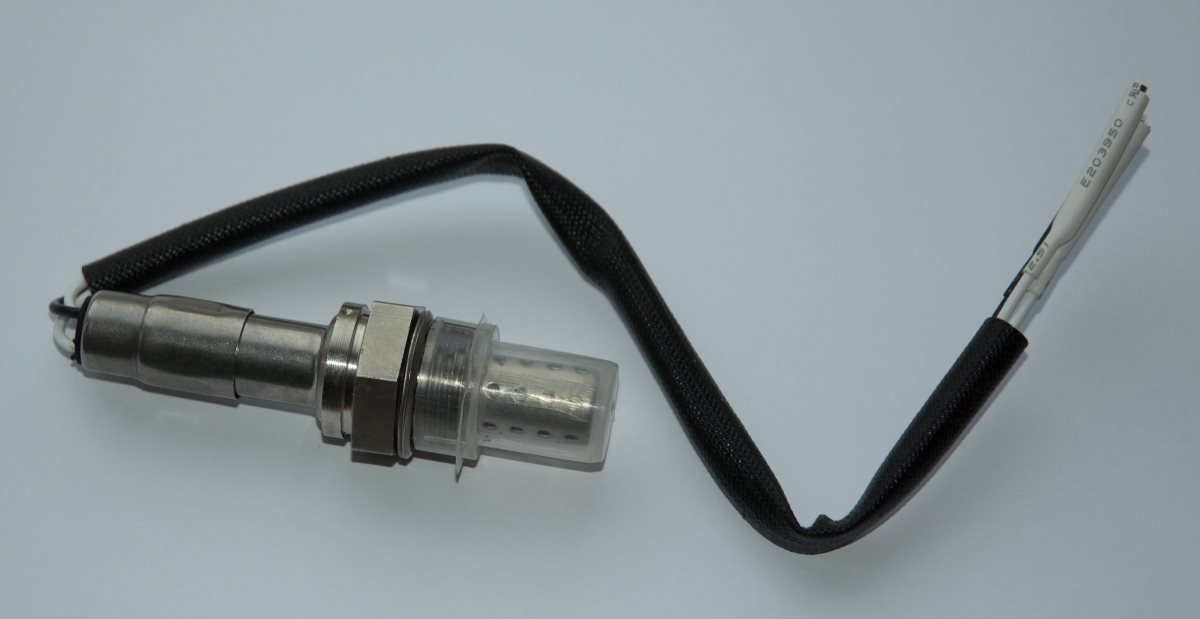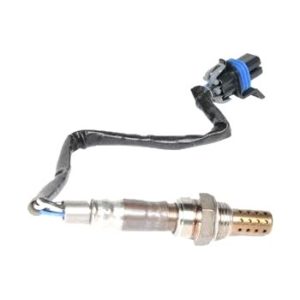What is a wide-band oxygen sensor?
A wide-band oxygen sensor, also known as an O2 sensor or an air-fuel ratio sensor, is a type of sensor used in the exhaust system of most modern gasoline vehicles to monitor the oxygen content in the exhaust gases. It provides feedback to the engine control unit (ECU) to help optimize the air-fuel mixture for efficient combustion.
Unlike conventional oxygen sensors, which are narrow-band sensors that primarily measure whether the air-fuel mixture is running rich or lean, wide-band oxygen sensors are more advanced and provide a more precise measurement of the air-fuel ratio. They are capable of accurately detecting the air-fuel mixture across a wide range of ratios, from lean to rich. The sensor then sends this information to your car’s onboard computer, where changes are made to the air/fuel ratio in your engine to improve fuel economy, performance, and emission cleanliness.
Wide-band oxygen sensor location
In most vehicles, the wide-band oxygen sensor is located before the catalytic converter in the exhaust system. It is often positioned near the exhaust manifold or exhaust pipe closest to the engine. The purpose of the upstream sensor is to measure the air-fuel ratio before the combustion gases enter the catalytic converter.
Does your car have a wide-band oxygen sensor?
By researching the type of car you have, you can get a good indication of whether your car has a wide-band or narrow-band oxygen sensor. You can use this guide to determine what type of oxygen sensor your car has.
Most late model (post 2008) Japanese vehicles (Toyota, Nissan, etc) and European vehicles (Volkswagen, BMW, etc) use wide-band sensors. Upon inspecting your oxygen sensor, you can also tell what type of sensor it is by the wiring. If there are four wires connected to the sensor, it is most likely a narrow-band (except for Toyota which uses four-wire wide-band sensors). If there are five or more wires, your car has a wide-band sensor.
Symptoms of a faulty wide-band oxygen sensor:
- Poor fuel economy – A faulty wide-band oxygen sensor can provide inaccurate readings to the engine control unit, leading to an incorrect air-fuel mixture. This can result in decreased fuel efficiency, meaning you may notice a decrease in your vehicle’s gas mileage.
- Reduced engine performance – A faulty wide-band oxygen sensor can negatively impact the engine’s overall performance. You may notice a decrease in power, responsiveness, or smoothness during acceleration or while driving at various speeds.
- Rough idling – An improperly functioning wide-band oxygen sensor can cause the engine to run too rich or too lean, resulting in a rough idle or even stalling. The engine may struggle to maintain a stable and smooth idle speed.
- Increased emissions – A faulty oxygen sensor can increase the emissions that exit your car via the exhaust. A common sign of this is visible exhaust smoke while driving. Excess exhaust emissions can lead to your car failing its Warrant of Fitness.
- Check engine light on – A malfunctioning wide-band oxygen sensor is often detected by the vehicle’s onboard diagnostic system, triggering the illumination of the check engine light on the dashboard. However, it’s important to note that the check engine light can indicate other issues as well, so further diagnosis is necessary. To diagnose a check engine light, bring your car in for an electronic scan.
It’s important to note that these symptoms can also be caused by other issues within the vehicle’s engine or fuel system. Therefore, if you suspect a problem with the wide-band oxygen sensor or experience any of these symptoms, it is recommended to have your vehicle diagnosed by a qualified mechanic. At Grimmer Motors, we have specialised diagnostic tools which allow us to quickly and precisely diagnose problems relating to air/fuel ratio, poor fuel economy, and engine performance.
Wide Band Oxygen Sensor Installation & Replacement in Hamilton
Is your car in need of a new wide-band oxygen sensor? If so, we can help! At Grimmer Motors, our team of skilled mechanics can quickly diagnose problems with your vehicle’s oxygen sensor. If it needs replacing, we can easily source the correct parts and install a new sensor in your vehicle.
This service will allow for:
- Improved engine performance, better acceleration and reduced misfires/stalling.
- Improved fuel economy
- Reduced exhaust emissions
For a wide-band oxygen sensor replacement in Hamilton, contact Grimmer Motors today!


